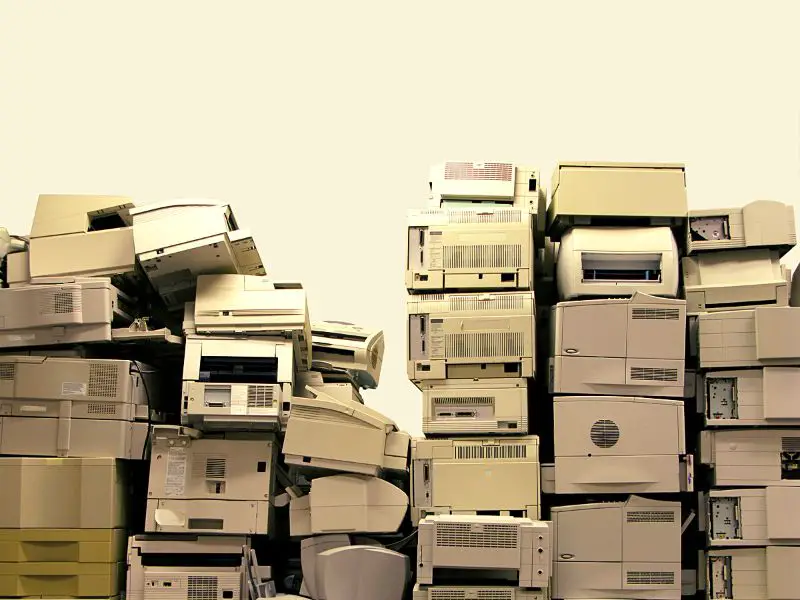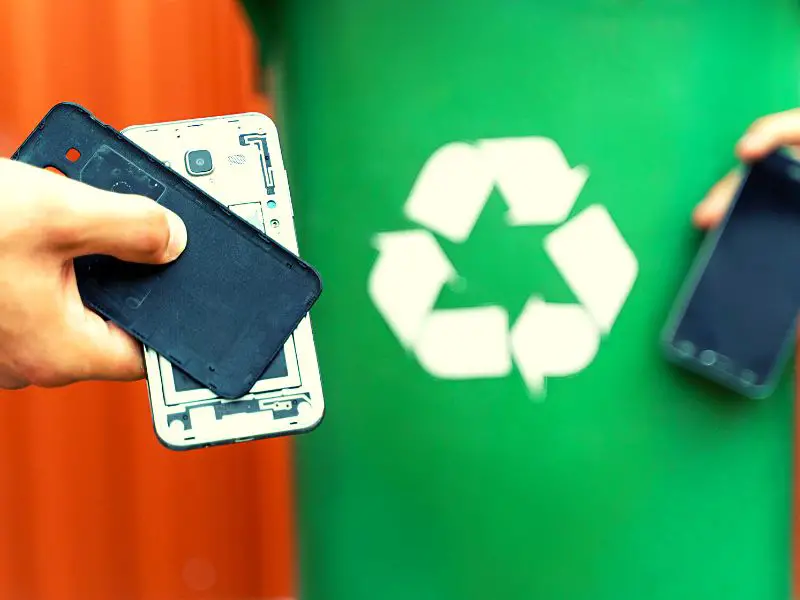Every year, we generate an estimated 2.5 million tons of electronic waste. That’s 10,000 pounds per second. That’s enough weight to fill the Empire State Building 16 times over.
Or, put another way, that’s enough electronic waste to fill 175 school buses daily.
That’s a lot of trash.
In fact, it’s more than six times the amount of municipal solid waste generated each year in the United States. But there’s good news – you can help reduce the amount of electronic waste you produce simply by donating your used electronics.

What’s Behind the Spike in E-waste?
When China prohibited 24 types of solid garbage, countries including the United States, the United Kingdom, Australia, and Japan recognized they had a massive e-waste problem.
Until 2017, China took 70% of the world’s e-waste, which included abandoned computers, mobile phones, printers, TVs, microwaves, smoke alarms, and other electronic equipment and parts.
After China stopped taking this e-waste due to environmental concerns, Europe and North America began exporting more of it to Southeast Asia—but now Vietnam and Thailand, whose ports are now overwhelmed, are also limiting imported e-waste.
What Kind of Materials Can You Find in E-waste?
Electronic gadgets are made of various components, including gold, silver, copper, platinum, palladium, lithium, and cobalt, amongst other precious metals and minerals.
One metric ton of circuit boards can contain 40 to 800 times the amount of gold and 30 to 40 times the amount of copper – The U.S. Environmental Protection Agency.
Through the process of recycling, they may regain these priceless resources.
But many electronic devices contain toxic metals such as lead and mercury, which can be hazardous to human health.
In 2016, the projected value of recyclable materials in worldwide e-waste was $64.6 billion, but only 20% of it was effectively recycled, allowing for the recovery of valuable materials.
As more people purchase electronic equipment, manufacturers are experiencing raw material shortages; thus, collecting and recycling resources from abandoned items and waste—a practice known as urban mining—makes economic and environmental sense.

Things to Do With Your E-waste
Take It Back
By taking back your used consumer electronics, you can help the environment. If you have an HP, Dell, Gateway, Apple, or Toshiba system, it’s as simple as going to their websites to learn more about their recycling methods. By going through the program, you can even earn an incentive of up to $50. Systems and components are repurposed or recycled to keep e-waste out of landfills.
Donate It
If you no longer use your computer or printer at home or work, consider donating it to your local charity or school so others can use it. Many organizations collect electronics for reuse and refurbish them to provide affordable technology to those who can’t afford to buy new devices. Before giving equipment, erase sensitive information from your hard drive or cell phone to protect |your privacy.
Recycle It
If the equipment is no longer usable by anyone else or doesn’t work correctly, you can recycle it for a nominal fee at a local computer store or repair shop. Electronics such as cell phones are refurbished and sold overseas for reuse. Robots may disassemble others to separate the valuable materials from the unusable ones and then melt them down to extract the precious metals for reuse.
5 Benefits of E-waste Recycling
E-waste recycling has become essential to save energy, resources, and landfill space. Let’s explore some advantages of e-waste recycling to help understand how it’s impacting our environment.
1. E-Waste Recycling Safeguards the Environment
Excessive use of technology has led to large piles of e-waste piling up all over the world. These old electronics can be hard to dispose of and contain harmful chemicals that damage the environment.
E-waste recycling is one of the safest forms to dispose of your electronics. Recycling your old electronics means fewer chemicals are emitted into the atmosphere, and fewer materials are required to make new products.
A green planet starts with you!
2. E-Waste Recycling Cuts Business Costs

Recycling electronic waste is not only beneficial to our environment, but it also has the potential to be good for your business’s bottom line.
Most state/territory governments have recently increased the cost of dumping or outright prohibited the practice to encourage the recycling of electronic devices.
There are also certain non-tangible benefits of recycling, such as lowering the future expenses of non-renewable materials and raising staff morale and retention rates. Both benefits can be achieved by recycling.
3. E-Waste Recycling Increases Affordability
People often want to let go of their gadgets, not because they’re broken, but because they want to purchase one with the newest tech. Donating your old electronics to charity or selling them in a second-hand store makes it easy for people who can’t afford to buy new gadgets.
Always remember that you may not need a specific electronic device, but someone else may find it the best thing in the world!
4. E-Waste Recycling Offers New Business and Employment Opportunities
Whether refurbishing used equipment or building new ones, skilled labor is in high demand in the expanding global technology industry. The more industries that emerge to recycle electronic waste, the more employment opportunities will be created for people in many areas of the world.
5. Recycling Encourages Conscious Consumerism
Making recycling e-waste a regular habit is an excellent way to consider how our choices and actions as consumers affect the environment.
We should stop the wasteful and irresponsible “throw-away” culture and instead practice conscious consumerism by thinking before we buy and repairing or recycling before we throw something away.
Recycling encourages mindful consumerism habits among consumers—especially young people—which will hopefully translate into future behavioral changes when buying new technology products. While reusing and recycling is undoubtedly better than throwing away gadgets in the trash, it’s best to buy only what you need and what you truly need!

Author’s Note
Going green with your old electronic devices not only makes environmental sense, but it makes economic sense as well. By turning our old electronic devices into something new and valuable, we value natural resources and generate new opportunities for people and businesses to thrive worldwide.
Find out how to live a sustainable lifestyle by checking out these guides.

5 thoughts on “E-Waste Recycling: How to Go Green With Your Old Electronics”